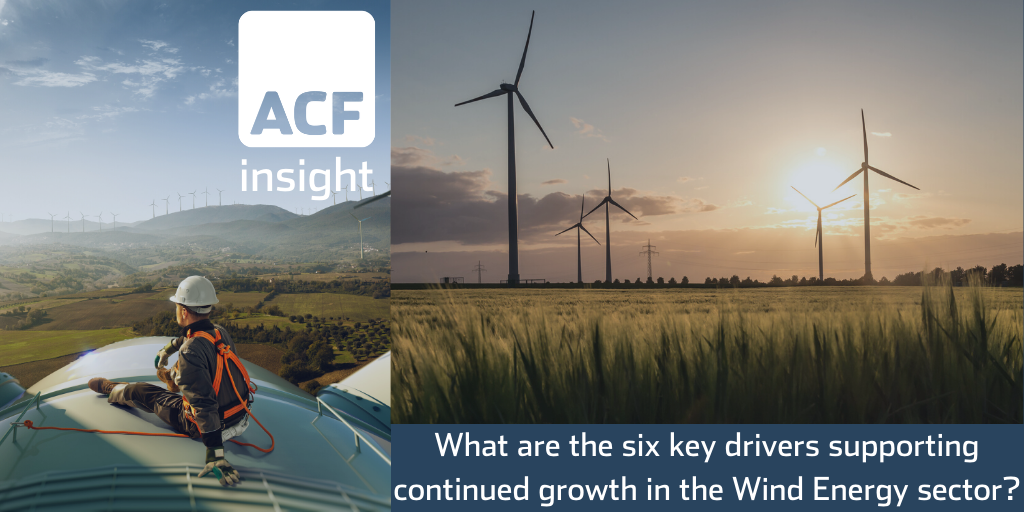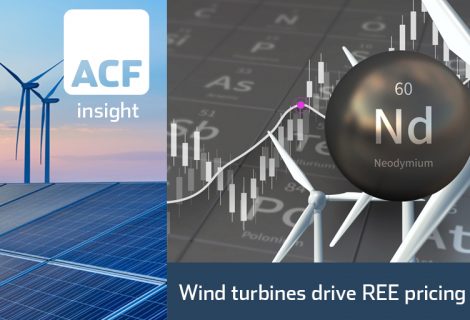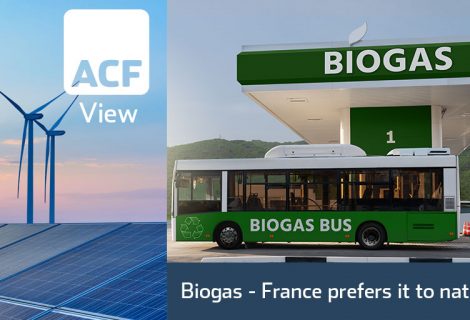Wind Energy: Pathway to Growth
These are exciting times for the global renewable energy industry. In this blog we aim to show why there is both an accelerated short-run and continued very strong long-run investment horizon case for wind power.
Our investment case conclusions are driven by trends in energy demand, supply, volume and technological innovation cost reduction as well as social change, and healthcare realities.
Global energy consumption has grown over the last 14 years, reaching 561.3Mtoe (millions of tons of oil equivalent) in 2018 up a staggering 583% from 82.2Mtoe in 2005 (BP, 2019). In US dollar terms, global investment in renewable energy grew to 288bn in 2018 up 84% from 45bn in 2004 (Frankfurt School-UNEP Centre/BNEF, 2019)
The world has relied heavily on fossil fuels, like coal and gas, as a primary source of energy. However, with increasing negative externalities (these are the hidden costs not represented in fossil fuel market prices, such as global warming emissions and air pollution) associated with fossil fuels, the world is now shifting towards greener energy sources. We believe this trend will only be accelerated by the Covid-19 crisis.
Increasing societal concerns over the rising levels of carbon emissions and their impact on the environment are changing the global landscape. As a result, the idea of using renewables as an alternative source of energy is commonplace.
The 2015 Paris Agreement was the first global collaboration made up of about 189 countries (including the US, China, EU, and India) that established environmental objectives to redirect global energy consumption from a high carbon source of energy to greener alternatives.
The 2015 Paris Agreement’s goal is to keep the rise in average global temperature over the next 80 years (i.e. the 21st Century) below 2°C and to limit further temperature rises in following centuries to 1.5 °C.
The health-related effect of carbon emissions, energy security, and the volatile oil price (average crude oil price fell 40.9% to USD 61.41 per bbl. in 2019 vs. USD 104.01 per bbl. in 2011) over the last 9 years, have made renewables an attractive alternative to the traditional fossil fuel forms of energy. (World Bank)
Energy generation from renewable energy sources has surged with global capacity reaching a reported 2,536,853 MW in 2019 up from 756,623 megawatt (MW) in 2000, CAGR of 7% over the period. (IRENA)
Wind energy, second to solar power, has been a force in the renewables industry since 2011. In 2018 global wind energy consumption reached 287.4 Mtoe vs. 98.8 Mtoe in 2011, which represents a CAGR of 16.4%. This can be compared to solar power, which in 2018 reached a reported 132.3 Mtoe vs. a 14.7Mtoe in 2011, which is a CAGR of 36.8%. Biomass by 2018 was delivering 141.6 Mtoe up from 90 Mtoe in 2011, a CAGR of 6.6% over the 7 year period. (BP, 2019)
This growth in wind power production has been driven by China, the US, Germany, Brazil and India. (GlobalData, 2019). The growth in wind energy consumption is reflected in both global onshore and offshore wind power capacity, which in 2019 totalled 622,704 MW up from 16,927 MW in 2000, a CAGR of 21% over the 18 year period.
Global wind energy revenues 2018 reached USD 96.4bn, up from USD 71.6bn in 2010, am 8-year CAGR of 4%. By 2030 the market for wind energy is expected to generate revenues of USD 124.5bn. Around 29% of wind energy revenue growth expected by 2030, is forecast to come from generation capacity improvements in the Asia-Pacific region (GlobalData, 2019).
Technological advancements for wind turbines have led to major cost reductions in the wind market. The average price range of wind turbines are expected to fall to USD 790 – USD 900/kW in 2018 from USD 910 – USD 1,050/kW in 2017, volume dependent. (IRENA, 2019)
Six key drivers – In our view, as the global population continues to grow and economies advance, there will be an increase in demand for renewable energy, in particular wind (and solar) energy. Below, we have identified six key drivers that are supporting continued growth in both production and demand for wind energy.
- The investment commitment is in place from energy producers. Wind-turbine capacity is expected to increase in the long-term. In 1985 typical turbines produced energy at a capacity of 0.05 MW onshore. (The first offshore wind turbines were not built until 1991). In 2019 wind power projects had turbine capacities of 2 MW onshore and 3–5 MW offshore, a 99% increase based on a total (onshore and offshore) capacity of 7 MW. (IRENA).
- The levelized cost of electricity (LCOE) for onshore wind will decrease as installed capacity costs fall and capacity performance continues to improve. Globally, the LCOE for onshore wind will decline to an average of USD 0.02-0.03/kWh (kilowatt-hour) by 2050 and USD 0.03-0.05/kWh by 2030 from USD 0.06/kWh in 2018, a decrease in cost to produce of 50% to 67% between 2018 and 2050. (IRENA, 2019).
- Available investing assets/funds for wind energy will continue to grow and Covid-19 is only likely to increase the rate at which investment is made in the production of wind (and solar) energy production. Investment reached USD 131.5bn in 2018 up from USD 18.9bn in 2004, a CAGR of 14.8% over the period.
- Renewables will gain market share in a growth market. Renewable energy’s growth as a proportion of total primary energy generation is expanding and primary energy generation is itself subject to growth in demand. Wind energy will be dragged along this curve and continue to grow, at least in line with renewable energy’s share of global primary energy supply.
- Covid-19 has proven to be not just a health issue but an economic issue as well. Companies will, we assess, be under increasing pressure to amend their business activities to include an ESG (Economic, Social, and Governance) policy as part of their core business (See our ESG Policy Opportunity note under ACF Explains on our website). Using renewable energy is a key part of any ESG policy.
- Our forecast shows that ESG sustainable investing assets in 20E will reach USD 25.2 trillion. In addition, we are seeing an increase in the interest of retails vs. institutional investors. ACF 20E forecast for retail share is 33% and for 19E it is 29%, compared to 18A at 25%.
It is clear to us that there is an improved near term future for wind (and solar) accelerated by Covid-19 and a long-term demand and capex supported bullish investment case for wind energy eco-system companies.













